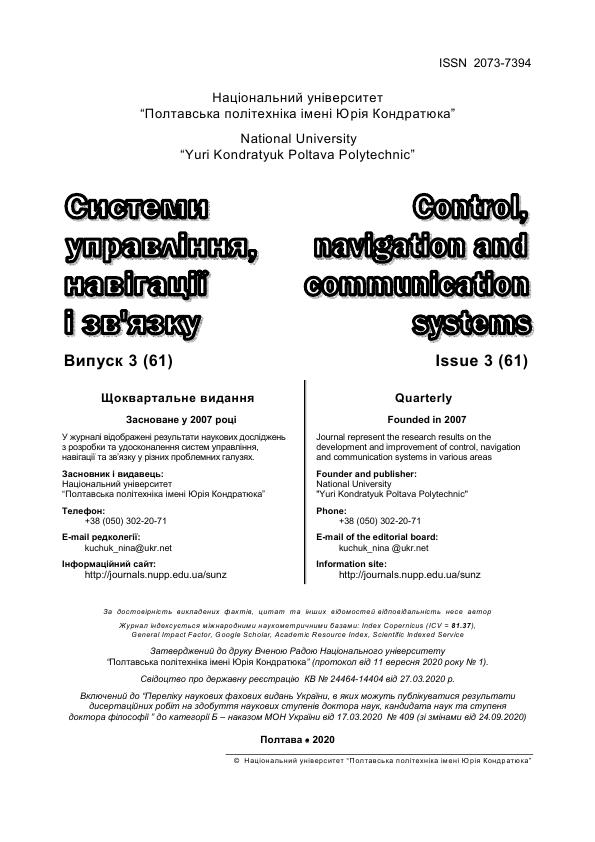DEVELOPMENT OF METHODS FOR DETERMINING THE FIELD OF MOTION VECTORS WITH WEIGHTING OF IMAGE BLOCKS MEASUREMENTS
DOI:
https://doi.org/10.26906/SUNZ.2020.3.021Keywords:
unmanned aerial vehicle, image blocks, optical flow, motion vector fieldAbstract
At the present stage, the issue of introducing into the UAV autonomous control system models and methods aimed at processing image blocks and optical flow obtained by the unmanned complex in the process of performing the flight task is not fully investigated. The introduction of these models and methods allows the introduction of hierarchical image processing of the surface over which the flight is performed, which will significantly expand the capabilities of the UAV control system for reflexive control. The subject matter of the article is the reflexive control processes of unmanned aerial vehicles. The goal is the development of a method for determining the field of motion vectors with weighing measurements of image blocks. The tasks: to develop models and methods aimed at processing image blocks and optical flow received by the unmanned complex in the process of performing a flight task. Analyzed methods are: optical flow model, adaptive texture analysis method for determining image features, weighting processing method for image blocks to determine the field of motion vectors. The following results were obtained: Models and methods have been developed that are the basis for the development of a method for determining obstacles and dynamic objects for unmanned aerial vehicles based on the field of motion vectors. In particular, a method for determining the field of motion vectors with weighing of image block measurements has been developed. This method is the basis for the development of a method for determining interference and dynamic objects for unmanned aerial vehicles based on the field of motion vectors, the application of which will significantly expand the possibilities of reflexive control of unmanned systems when performing various flight tasks. Conclusions. The introduction of a model and methods aimed at processing image blocks and optical flow into the UAV control system will allow in the future to detect obstacles in real time and ensure traffic safety by determining and analyzing the field of motion vectorsDownloads
References
Р. Мохаммади Фархади, "Оценивание аэродинамических коэффициентов и синтез робастного управления боковым движением БПЛА при малых скоростях", Вопросы проектирования и производства конструкций летательных аппаратов, No 3 (91), с. 71-82, 2017.
К. В. Мельник, и А. А. Туник, "Проектирование многомерных робастных систем управления полетом на основе процедур H∞-оптимизации и μ-синтеза", 2009.
. Кортунов, А. Мазуренко, и А. Х. В. Мухаммед, "Средства управления мини и микро-БпЛА", Радіоелектронні і комп’ютерні системи, с. 45–55, 2016.
R. D. Colgren, Applications of robust control to nonlinear systems vol. 205: AIAA, 2004.
J. O. Rawlings, S. G. Pantula, and D. A. Dickey, Applied regression analysis: a research tool: Springer Sc. & B. Media, 2001.
P. G. Hamel, and R. V. Jategaonkar, "Evolution of flight vehicle system identification", J. of aircraft, vol. 33, pp. 9-28, 1996.
Свиридов А. C., Коваленко А. А., Кучук Г. А. Метод перерозподілу пропускної здатності критичної ділянки мережі на основі удосконалення ON/OFF-моделі трафіку. Сучасні інформаційні системи. 2018. Т. 2, No 2. С. 139–144. DOI: https://doi.org/10.20998/2522-9052.2018.2.24
J. C. Doyle, B. A. Francis, and A. R. Tannenbaum, Feedback control theory: Courier Corporation, 2013.




